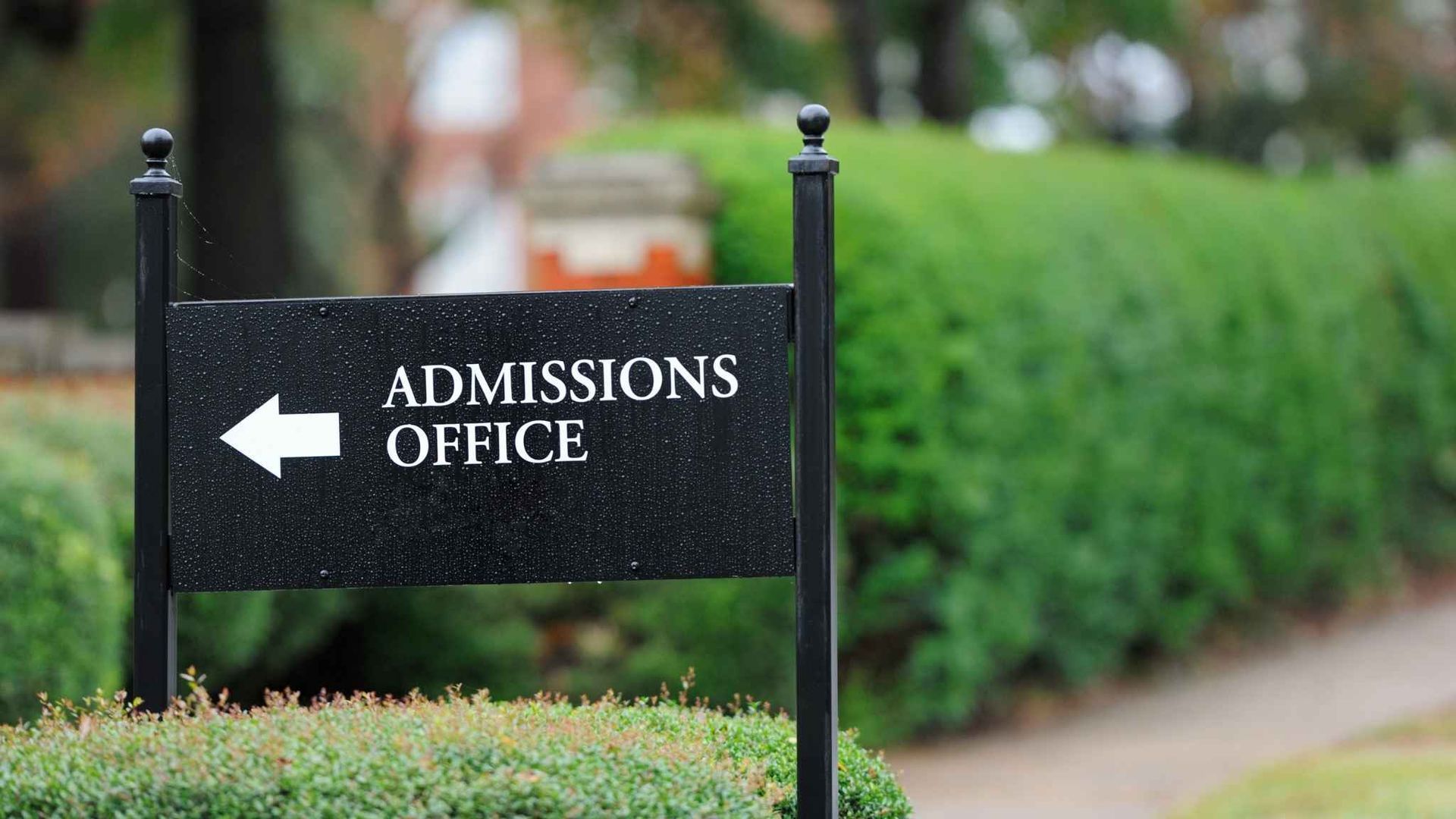What College Is The Best Fit For Me? A Research-Based Guide
When you're on the brink of deciding the right path for your future, knowing how to properly choose a college will make all the difference—for both you and your family.
But, with over 4,000 colleges and universities in the United States alone, it can be quite overwhelming to go through this process. You have to take a lot of things into consideration, and it can be a daunting task!.
It doesn't have to be that complicated, though.
Here, we'll help you understand the key components to finding a good college fit—and save you lots of time (and headaches) by simplifying the decision-making process.
Why College Fit Matters
Choosing the right college isn't just about getting into a prestigious school; it's about finding a place where a student can truly thrive—in the classroom, socially, and as an individual.
According to a study by Mattern, Wyatt, and Shaw (2013), students who attend a college that fits them well are more likely to graduate on time and achieve higher GPAs. The importance of college fit extends beyond academic performance; it also influences a student’s overall well-being and satisfaction with their college experience.

Photo by Yan Krukau from Pexels
One of the primary goals in finding the right fit is to minimize the likelihood of transferring colleges. Switching colleges can be emotionally exhausting and often leads to lost credits and a longer path to graduation. By taking the time to evaluate fit ahead of time, students and their families can help ensure a smoother, more fulfilling college experience, saving themselves from potential headaches down the road.
The Different Types of Colleges
Before exploring the path to determining best fit, let us first get familiar with the different types of colleges and what each one has to offer:
1. Private Liberal Arts Colleges
Private liberal arts colleges are dedicated to offering a well-rounded undergraduate education revolving around a wide range of disciplines. These colleges typically have small class sizes, so students are given personalized attention and the chance to develop close relationships with their professors—creating a supportive and intimate learning environment where students can truly thrive.
Although research opportunities may not be as abundant compared to larger universities, undergraduates often enjoy more direct access to them. Campus life at liberal arts colleges is typically close-knit, with a smaller selection of extracurricular activities, but those that do exist are deeply engaging and foster a strong sense of community. These colleges primarily confer bachelor’s degrees, with funding largely derived from tuition, donations, and endowments.
2. Private Research Institutions
Private research institutions, on the other hand, offer a balance between undergraduate and graduate education, making them appealing to students who may want to pursue advanced degrees. These institutions typically have larger class sizes than liberal arts colleges, but they still offer smaller classes than public universities.
Research institutions are well-equipped with extensive resources, so students can engage in cutting-edge research across various disciplines. These institutions confer doctoral and professional degrees, with funding primarily derived from tuition, donations, and endowments.
3. Public Research Institutions
Public research institutions are known for their emphasis on both undergraduate and graduate education. These universities typically have larger class sizes and a higher student-to-faculty ratio compared to private institutions.
They offer extensive research opportunities and significant resources, making them attractive to students interested in fields that require robust research facilities. Campus life at public universities is often diverse and vibrant, with a wide array of extracurricular activities. These institutions also confer doctoral and professional degrees, with funding coming from state allocations, tuition, and research grants.
The Four Components of College Fit
When weighing college options, it's important to think about four key factors: financial fit, academic fit, social fit, and environmental fit. Let's take a look at each of them in detail:
1. Financial Fit: Can We Afford It?

Photo by Mikhail Nilov from Pexels
Financial fit is often the first and most defining conversation in the college selection process. Taking affordability into consideration early will definitely help in the long run; it can prevent disappointment and difficult financial decisions later on. Remember, college costs include more than just tuition - you also have to consider the following:
- Room and board
- Supplies
- Personal expenses
- Travel costs
These can really add up depending on where the college is located and whether the student lives on or off campus. If there's a lack of funds in one or two of these areas, it's possible the other factors and overall experience will be affected. So, be proactive and discuss affordability right from the start.
Major Types of Financial Aid
If you're really keen on getting into a certain college or university but are being wary about the costs, there are options to help you out. There are typically two types of financial aid: merit-based and need-based awards.
Merit-Based Awards
These are essentially “discounts” against the cost of attendance, awarded primarily based on academic factors. However, the more selective the institution, the less likely it is to offer merit-based awards. For instance, Ivy League schools do not grant any merit-based awards, focusing instead on need-based aid.
Need-Based Awards
These include work-study programs, need-based scholarships, and loans (institutional, private, or government). Public institutions are generally more likely to provide aid through loans rather than grants.
How to Assess Financial Fit
Parents should start by having an open conversation about how they plan to pay for college and how much they can realistically afford or save. It’s also important to use a net price calculator each year for the colleges being considered. This handy tool gives families a clearer picture of what attending a particular college might actually cost after factoring in financial aid options.
When using the net price calculator, it’s helpful to compare four different types of schools:
- In-state public universities - These fall under the public research institutions category and are generally more affordable for residents.
- Out-of-state public universities within the Western Undergraduate Exchange (WUE) - These are also public research institutions, but they offer reduced tuition for students from participating states.
- Out-of-state public universities outside of WUE - Still within the public research institutions category, these schools typically have higher tuition rates for non-residents.
- Private colleges - Depending on their focus, these can either fall under private liberal arts colleges or private research institutions and often provide merit awards.
What is the Western Undergraduate Exchange (WUE)?
The Western Undergraduate Exchange (WUE) is an interstate tuition savings program that includes over 160 public schools in 16 Western states. If you’re a resident of one of these states and attend a participating school, you’ll pay 1.5 times the in-state tuition instead of the full out-of-state tuition. This can offer significant savings, making higher education more accessible for many families.
2. Academic Fit: Does This School Challenge and Support Me?

Photo by Tima Miroshnichenko from Pexels
After considering the financial fit, academic fit comes into play. This is more than just figuring out if a school is competitive or collaborative enough—it must also align with the student's academic goals, strength, and learning style. This will be a significant factor in the overall engagement, satisfaction, and success of a student in college.
Why Academic Fit Matters
Students who find a strong academic fit are more likely to graduate. According to data, the six-year graduation rate for first-time, full-time undergraduate students who began a bachelor's degree at four-year degree-granting institutions in fall 2013 was 63% at institutions where students reported high academic satisfaction.
Key Academic Factors to Consider
When evaluating academic fit, consider the following:
1. Curriculum Strength and Major Offerings
Does the college offer the specific majors, minors, or double majors that the student is interested in? For instance, if a student wants to double major in computer science and business, they might need a school with a joint program between those departments. It’s also worth considering specialized options like five-year programs, Honors Programs, or BS/MD programs that could align with the student’s goals.
2. Flexibility for Undecided Students
For students who are unsure of their major or career path, it’s important to look for colleges with open curricula, liberal arts colleges, or large universities with diverse programs and flexible declaration policies.
3. Class Sizes and Teaching Styles
A low student-to-faculty ratio can lead to better professor accessibility and more research opportunities. Additionally, consider whether courses are taught by professors or teaching assistants, as this can affect the quality of instruction.
4. Research Opportunities
Colleges are increasingly investing in academic programs, and some of the most exciting opportunities might be found at schools that aren’t necessarily the most prestigious. For instance, in 2022, the CEO of Nvidia (an alum) funded a program at Oregon State University to build an AI supercomputer. Such initiatives offer incredible hands-on experience that might not be available at more well-known colleges.
5. Academic Support
It’s also important to consider the academic resources available to students, including libraries, study spaces, technology resources, tutoring, and writing centers. Additionally, look into the academic rigor and support services offered by the college, such as admission requirements, selectivity, graduation rates, time-to-degree, and academic advising services.
3. Social Fit: Do I Like the Vibe?

Photo by Keira Burton from Pexels
Beyond gauging whether there is an academic fit, a student must also consider the feeling they get when it comes to the social aspects of a school—which essentially just means how well they feel that they belong on the campus. Simply put, a good social fit means that a student's personality, interests, and social needs will be met by a particular institution.
Why Social Fit is Important
A study by Bowman and Denson (2014) found that students who feel a strong sense of belonging on campus have better academic outcomes and higher retention rates. A good social fit can enhance a student’s college experience by providing a supportive community and opportunities for personal growth.
When considering social fit, explore the various social opportunities available on campus:
1. Student Clubs and Organizations
Research the types of student clubs and organizations available, including those related to academics, hobbies, social causes, and professional development.
2. Greek Life
If Greek life is important to the student, consider colleges with a strong presence of fraternities and sororities.
3. Weekend Activities and Events
Look into the types of events and activities that take place on weekends, as these can be a key part of the college experience.
4. College Events
Some colleges have unique traditions or events that contribute to the campus culture, such as Picnic Day at UC Davis or the excitement of “game day” at schools with strong athletic programs.
5. Student Body Demographics
The makeup of the student body is also an important part of finding the right social fit at a college. Think about factors such as political leanings, diversity and inclusion, the presence of international students, and support for first-generation college students.
Some students might also be drawn to all-women colleges or Historically Black Colleges and Universities (HBCUs) for a more personalized experience that aligns with their identity and values.
How to Assess Social Fit
The best way to assess social fit is through an on-campus visit. Ideally, visit during the school year when classes are in session, and take the opportunity to interact with current students. If you can’t make it in person, many schools offer virtual tours so check those out!
In addition to campus visits, you can gain insights from alumni, discussion boards, and student review sites like Niche. However, keep in mind that online reviews often reflect extreme opinions, so it’s important to take them with a grain of salt.
4. Environmental Fit: Does the Location and Campus Bring Out Your Best Self?

Photo by George Pak from Pexels
Environmental fit encompasses the geographic and physical aspects of a college that can influence a student’s day-to-day experience. Here are some primary factors to consider:
1. Urban, Suburban, or Rural Settings
Some students thrive in the hustle and bustle of a big city, while others prefer the quiet of a rural campus. Suburban campuses offer a middle ground, providing a balance between access to city amenities and a more relaxed environment.
2. Distance from Home
How far is the college from home? Some students want to stay close to their families, while others are eager to explore new places farther from home.
3. Climate and Weather
The climate and weather of a college’s location can have a significant impact on a student’s experience. Consider whether the student prefers warm, sunny weather or is excited about snowy winters.
4. Campus Layout and Facilities
Consider the layout of the campus and the quality of its facilities. Is the campus walkable? Are the dorms comfortable? Are there ample study spaces and recreational facilities?
5. Housing Options
Look into the housing options available, including dormitories and off-campus living arrangements. Some students prefer the convenience and community of on-campus housing, while others may seek more independence in off-campus apartments.
6. Campus Traditions and School Spirit
College traditions and school spirit contribute to the overall atmosphere of the campus. Some schools are known for their spirited student sections at sporting events, while others have unique traditions that bring the campus community together.
How to Assess Environmental Fit
Like social fit, the best way to assess environmental fit is to visit the campus in person. Even if you don’t have a specific college in mind, visiting nearby campuses can help you understand what type of environment you might thrive in.
What to Do Next: Steps for Finding the Right College Fit
Now that you have a comprehensive understanding of the factors that contribute to college fit, it’s time to take action. Here are some practical steps you can take to find the right college:
Visit a Campus or Three
There’s no substitute for experiencing a campus in person. Schedule visits to a few colleges, ideally while classes are in session. Sign up for campus tours, visit the dining halls, and explore the surrounding area to get a feel for the environment.
Plan Campus Visits When You Travel
If you’re planning a trip, consider visiting nearby colleges. Some schools place a high value on demonstrated interest, which can be shown by attending an official campus tour. For example, Pomona College asks applicants to provide the dates of their campus visits as part of the application process.
Research Colleges Using Online Tools
Take advantage of online resources such as Maia/Naviance, Niche, Appily, and College Navigator. These tools can provide valuable information about colleges and help you narrow down your options. Online forums like those in Reddit can also offer insights from current students and alumni.
Don’t Forget to Complete a Net Price Calculator
Financial fit is critical, so be sure to complete a net price calculator for each college you’re considering. This will give you a clearer picture of the actual cost of attendance after financial aid is factored in.
Make the Right College Choice with Confidence
Finding the right college isn't just about picking a name that looks good on a diploma—it's about finding a place where you or your student can truly flourish. By looking closely at the financial, academic, social, and environmental aspects, you can zero in on the schools that will really feel like home and help you grow into your best self.
After all, college should be a place where you don’t just attend classes—you thrive, learn, and become who you’re meant to be.
At StrivePath, we understand that this process can be overwhelming, but you don’t have to go through it alone. If you need more tips or personalized advice on finding the best college fit for you or your student, we're here to support you every step of the way. Don’t hesitate to reach out to us at contact@mystrivepath.com or give us a call at 925-466-3606.
We wish you the best of luck on your college search and hope you find the perfect fit that will lead to a rewarding and successful college experience!










